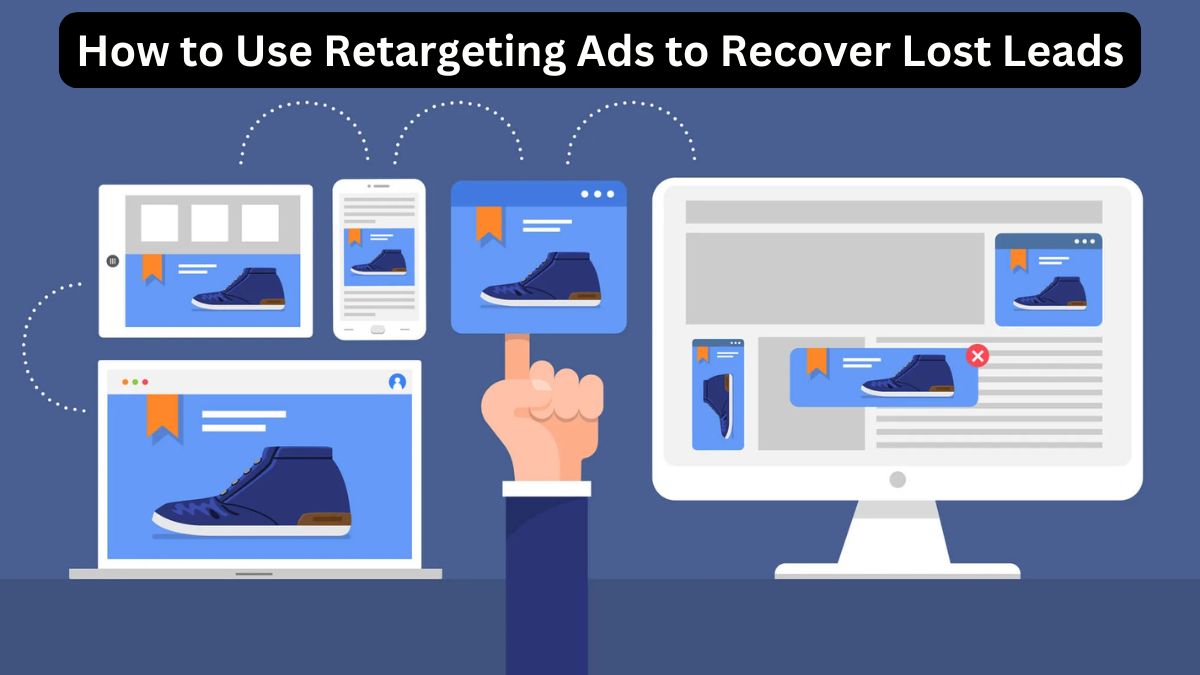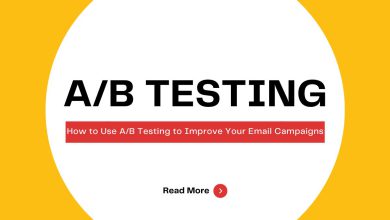
Every business, especially in digital marketing, faces a challenge. They lose potential leads who visit their website but don’t act. This includes filling out a form, making a purchase, or signing up for a newsletter. Retargeting ads can effectively recover lost leads. They can re-engage users, remind them of your brand’s value, and guide them back into the sales funnel.
This guide will cover the basics of retargeting. It will explore how it differs from remarketing. Finally, it will give steps to set up retargeting ads to recover lost leads and boost conversions.
1. Understanding Retargeting Adsa
Retargeting is a type of advertising. It aims to re-engage users who have interacted with your brand but have not converted. These users could have visited your website, viewed specific products, or added items to their cart without making a purchase. Retargeting ads follow users across online platforms, like Google and Facebook. They remind users of their interest and urge them to take action.
Key Differences Between Retargeting and Remarketing
While often used interchangeably, retargeting and remarketing are distinct strategies:
Retargeting: Primarily relies on paid ads to re-engage users who have previously visited your site.
Remarketing: Typically involves re-engagement through email marketing campaigns. It focuses on past customers or users who have shared their email but haven’t taken further action.
This post will focus on retargeting ads. They are a powerful way to re-engage leads and move them back into the customer journey.
2. Why Retargeting Works for Recovering Lost Leads
Retargeting addresses the critical issue of lost leads in digital marketing. Research shows that over 90% of visitors leave a website without completing a purchase. Retargeting lets businesses re-engage a large group. It shows ads across platforms and often boosts conversions.
The reasons retargeting works so effectively include:
Brand Recall: Retargeting keeps your brand top of mind, increasing the likelihood that a lead will return to your website.
Behavioral Segmentation: You can retarget users based on specific actions, like viewing a product page or adding items to the cart.
Personalization: Retargeting ads can be highly personalized, featuring specific products a user interacted with, improving the chances of engagement.
3. Setting Up Retargeting Ads: A Step-by-Step Guide
To begin using retargeting ads, you’ll need a retargeting platform, like Google Ads, Facebook Ads, or LinkedIn Ads. Below is a step-by-step process to set up retargeting ads effectively.
Step 1: Install the Pixel or Retargeting Code
First, add a retargeting pixel or code to your website. This pixel tracks visitor behavior and stores relevant data for future retargeting.
Facebook Pixel: Allows you to retarget users on Facebook and Instagram.
Google Ads Tag: Enables retargeting across the Google Display Network and YouTube.
These pixels track users based on page views, clicks, and time spent on specific pages. Once set up, you can track valuable actions like ‘Add to Cart’ and ‘View Product,’ helping to target those who showed strong intent but did not convert.
Step 2: Define Your Audience Segments
Segmenting your audience is vital in retargeting. It lets you create ads tailored to users’ actions on your website. Some common segments include:
Website Visitors: People who have visited your site in the last 30 days.
Product Viewers: Users who viewed a specific product or product category but did not add it to the cart.
Cart Abandoners: Those who added products to their cart but didn’t complete the purchase.
Past Purchasers: Customers who completed a purchase and may be interested in new products.
Defining these segments helps you focus on leads with varying levels of intent, allowing you to craft unique ads for each audience.
Step 3: Choose Your Retargeting Platform
Different retargeting platforms provide unique benefits. Consider where your audience is most active:
Google Display Network: Great for broad reach, Google’s network allows ads to appear across websites, Google services, and YouTube.
Facebook and Instagram: Perfect for targeting users in a more visually appealing environment; ideal for retargeting with social engagement.
LinkedIn: A good choice for B2B retargeting ads aimed at professionals.
Step 4: Set Your Ad Objectives and Budget
Define what you want to achieve with your retargeting ads. The objectives typically include:
Conversions: Encourage users to complete purchases or sign up.
Engagement: Re-engage with your brand through clicks or social shares.
Awareness: Remind users about your brand or new products.
When setting your budget, consider testing with a smaller budget first. Over time, as you analyze what works best, you can scale up your investment in retargeting.
Step 5: Design Compelling, Action-Oriented Ads
A well-crafted retargeting ad can make the difference between a conversion and a missed opportunity. Here are some tips for creating compelling ads:
Highlight Benefits: Emphasize the unique features or benefits of your product.
Add Urgency: Use phrases like “Limited Stock” or “Offer Ends Soon” to create urgency.
Showcase Social Proof: Include reviews, ratings, or testimonials to build trust.
Personalize: Use dynamic retargeting to show users the exact product they viewed on your website.
Step 6: Set Frequency Caps and Exclusion Rules
To avoid overwhelming your audience with repetitive ads, set frequency caps. These caps limit the number of times a user sees your ad in a given period. Also, set rules to exclude users who have already converted. This ensures your budget is spent on new or returning leads.
4. Optimizing Your Retargeting Campaigns for Higher Conversions
After your retargeting campaigns go live, optimize them. This will improve their effectiveness and ROI. Here are some ways to optimize your retargeting ads:
A/B Testing: Regularly test different versions of your ad copy, images, and CTAs to find the most effective combinations.
Experiment with Timing: Adjust the timing of your ads to ensure users see them shortly after visiting your website. For instance, show ads within 24 hours to maximize brand recall.
Refine Your Segmentation: Look at your audience segments and identify any groups that may not be responding well. Consider narrowing your target to focus on the most engaged users.
Use Retargeting for Cross-Selling: For past purchasers, retarget with products that complement their previous purchase, encouraging repeat sales and increasing lifetime customer value.
5. Common Retargeting Challenges and How to Overcome Them
Even with a strong retargeting strategy, businesses often encounter challenges. Here’s how to navigate some of the most common obstacles:
Ad Fatigue: Showing the same ad too frequently can lead to ad fatigue, where users ignore your message. To combat this, refresh your ad creatives every few weeks to maintain user interest.
Privacy Concerns: With increasing data privacy regulations, be transparent about your retargeting efforts. Ensure compliance with GDPR and CCPA by obtaining user consent and offering opt-out options.
Tracking Gaps: Sometimes, technical issues can lead to gaps in retargeting data. Regularly monitor your pixel implementation to confirm it’s tracking all user actions accurately.
6. Success Metrics to Measure Retargeting Ad Performance
Tracking your retargeting campaign’s performance ensures that your efforts translate to results. Key metrics to consider include:
Click-Through Rate (CTR): Measures how often users click your retargeting ads. A high CTR indicates your ads are relevant and engaging.
Conversion Rate: The percentage of users who complete the desired action after clicking on your retargeting ad. A high conversion rate indicates effective ad targeting and messaging.
Cost Per Conversion: This metric reflects how cost-effective your retargeting ads are. Lowering your cost per conversion over time helps maximize ROI.
Frequency: Measures how often a user sees your ad. Monitoring frequency helps prevent ad fatigue and ensures your retargeting remains effective.
7. Best Practices for Maximizing Retargeting Success
Here are a few best practices to keep in mind as you scale and refine your retargeting campaigns:
Incorporate Dynamic Retargeting: Dynamic retargeting automatically populates ads with products a user previously viewed, making it ideal for e-commerce businesses.
Leverage User-Generated Content: Use customer reviews or photos in your ads to build social proof and increase conversions.
Experiment with Seasonal and Time-Sensitive Offers: Promoting limited-time discounts or holiday sales can be effective for bringing back lost leads.
Combine with Email Retargeting: Use retargeting ads alongside remarketing emails for a cohesive approach. If a user didn’t respond to an ad, a well-timed email can help reinforce the message.
8. Conclusion
Retargeting ads are a powerful way to recover lost leads and maximize conversion potential. Businesses can boost ROI by driving conversions and brand recall. They can do this by running strategic campaigns and segmenting audiences. Then, they can use personalized, compelling ads. Successful retargeting depends on three things. First, know your audience’s journey. Second, monitor results. Finally, optimize campaigns to meet their changing needs.
Retargeting is more than a recovery tool. It’s key to maintaining brand visibility and nurturing potential customers. With these strategies, you’re on your way to using retargeting ads to boost lead recovery and business growth.




